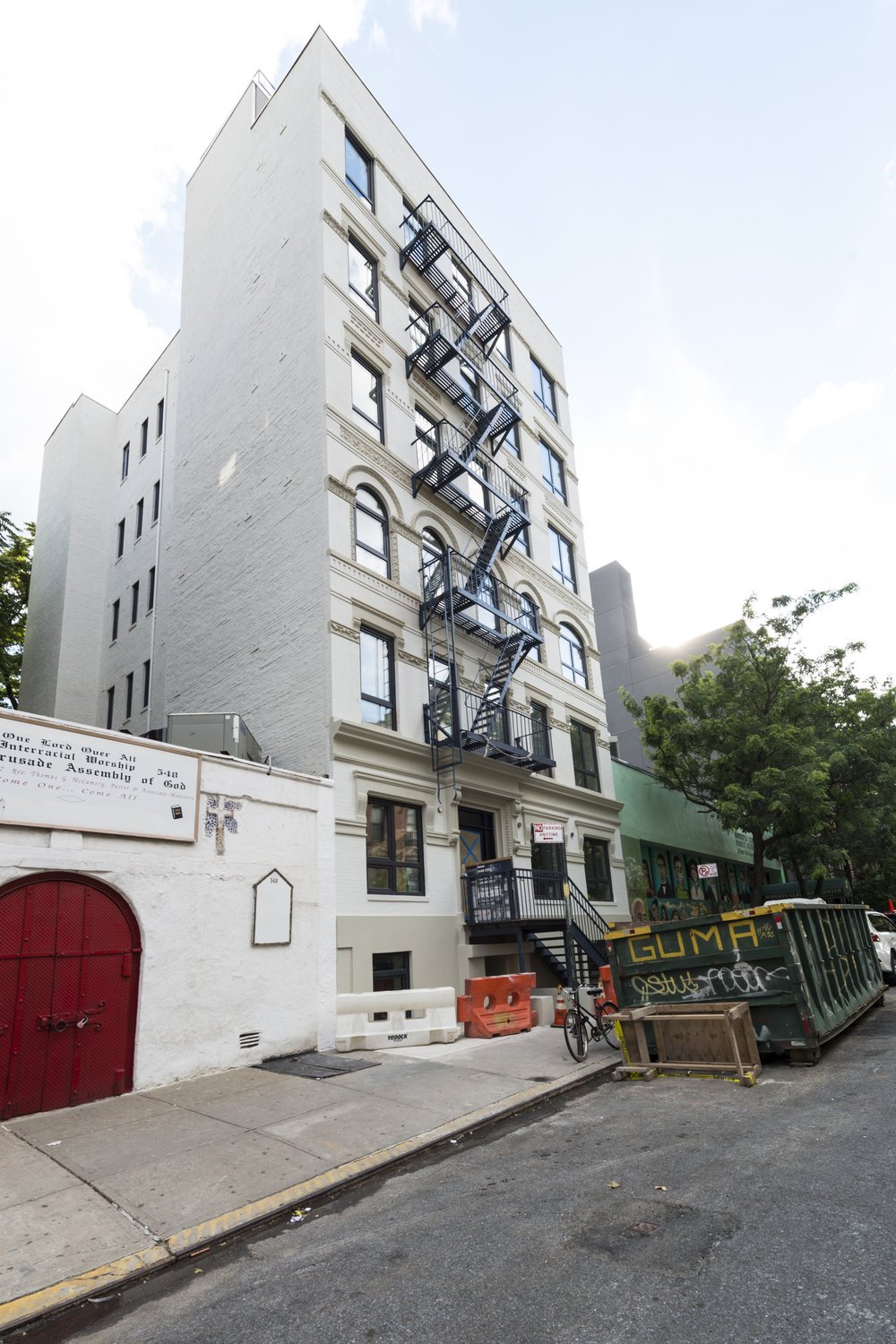There Ought To Be A Law, Right?
By: Nancy Anderson, Ph.D.
May 23, 2018
Raising the level of energy performance in buildings old and new has been on New York City's climate action agenda for nearly a decade. While a crop of new Energy Star-rated, LEED-certified and Passive House-compliant buildings are up and occupied and voluntary energy performance upgrades or "retrofits", like the Empire State Building, have been undertaken and celebrated, signals that these "greener" buildings are part of a surge sufficient to make a big dent in the City's energy use and carbon footprint are hard to detect. Is this a problem baked into local property markets, policy design or political will?
Let's consider what has been accomplished on the way to understanding the nature of this problem. First, the 15% drop in NYC's greenhouse gas emissions since 2005 is attributed largely to the switch to natural gas at electric generating plants and the successful ban on the use of #6 heating oil in buildings around the City. Good, but this drop is not a victory for building design or operations. Second, informed by energy benchmarking in municipal buildings, by spending $480 million to date, "The City has focused its own investment in municipal-owned buildings on high value energy efficiency projects by allocating competitive funding and implementing deep retrofits in key facilities." It has improved the Energy Star score for its 'eligible' buildings 21% since 2010.
Great, but what about all the buildings not owned by the City? Third, there has been a startling reversal in a decades-old trend of steady increases in electricity use citywide, this reversal isn't just a good news blip. The problem is, all this good news just is not enough to reach the goal of cutting our total greenhouse gas emissions 80% by 2050 and we have little reason to believe that the 'low hanging fruit', such as swapping out every energy hungry light bulb for LED's or tuning up the boiler in the basements of well-maintained buildings will be enough. New York City's exemplary Building Energy Benchmarking Law, Local Law 84, with its robust data base, backs up the fear that we're not yet doing what needs to be done.
While it would be a mistake to succumb to resignation, saying either the means or the ends are unreasonable or infeasible, as Winston Churchill noted, "Sometimes doing your best is not good enough. Sometimes, you must do what is required." This brings us to the question for this column: does New York City need to pass a law now to compel energy retrofits in existing buildings to make them collectively capable of meeting our 80% carbon cutting commitment? A corollary question, if the answer is "yes" to the first, what kind of coalition-making is necessary to get such legislation enacted?
The Environmental Defense Fund's Rory Christian, New York Director, Clean Energy and Marc Rauch, Senior Specialist, New York Clean Energy Real Estate, shared some of their sharpest ideas with me about why the Big Apple needs a building energy retrofit law, one that would require existing buildings to meet stipulated energy utilization standards by way of owners undertaking the energy efficiency upgrades most appropriate to their situations. In 2017, Intro 1745, covering buildings of 25,000 gross square feet or larger, was introduced into the City Council by Costa Constantinides, Chair of the Environmental Protection Committee and supported by Mayor de Blasio. An amended version of this bill is expected to be introduced for Council consideration this year. Absent a redrafted bill, my conversation with Messrs. Christian and Rauch was not a line by line legislative critique. Rather, it was an open-ended and forward-facing consideration, based on their experience with climate/energy policy goals and the real estate industry.
 Rory Christian
Rory Christian
 Marc Rauch
Marc Rauch
For them, the dynamics and drivers of the real estate market both create some incentives for and throw up many barriers against bringing existing buildings up to more demanding levels of energy performance. Starting with the base line reality that property owners seek to maximize their revenue and profits, it follows that legislation ought to harness the profit motive, when feasible, for enhancing building energy efficiency. For Mr. Rauch, among the incentives that have worked in voluntary programs like the NYC Carbon Challenge — established in 2007 for participating property owners to cut their emissions 30% over ten years — are competitive pressure to be LEED or Energy Star certified. As well, occupant and investor expectations have become a force to be reckoned with. Commercial occupants like new tech companies are highly valued and they want to rent sustainable, green offices. On the finance side, today's many REITS and institutional investors have formal sustainability goals for where they put their money. For others, "bragging rights" about having staffs that are happier to be working in green buildings is a motivator. Finally, peer pressure has been a potent driver in the Carbon Challenge. In fact, it's worked so well, that some building owners and managers having exceeded their 30% carbon cutting goals are now committing to 40–50% emissions reductions.
When taken together, these incentives go a long way toward explaining why some owners of commercial or residential assets, have become industry leaders and early adopters of building energy performance upgrades. However, these drivers and rewards are either unavailable to the bulk of the City's property owners or are not valued enough as business decisions to make the kinds of changes at a scale that public climate policy calls for. As if to underline this truth, a recent article in Crain's named names, noting that several recently-constructed highest-of-the-high-end Manhattan condo projects have blithely disregarded energy efficiency and are slurping energy as if there is no tomorrow. "As New York moves to cut greenhouse gases, new projects show scant sensitivity to environmental concerns. But do upscale buyers even care?" With this kind of new construction, it's clear that without widespread energy upgrades of New York City's existing building stock, things look grim for Gotham keeping the climate protection promises it has made to future generations.
Based on their experience, Christian and Rauch are strong advocates for a New York City building energy retrofit law; voluntary commitments alone won't achieve what's necessary. Absent legislation, "hard market barriers" like the fact that while energy efficiency saves money over time, equipment and operations upgrades cost money now and there's no guarantee how long it will take for that investment to pay off. Also, "opportunity costs" pull owners and managers away from investing in energy efficiency; purchasing an energy efficient boiler or insulating the building envelope means there may not be the budget to redo the lobby or install new lighting. elevators or refrigerators.
 Caption: 544 East 13th Street
Caption: 544 East 13th Street
In Mr. Christian's estimation, other municipal programs like the Retrofit Accelerator, geared to advancing voluntary building energy upgrades, are only now reaching the cusp of their full potential for helping to comprehend and confront "hard market barriers" to greener buildings. With a retrofit mandate in place, program participation and tangible accomplishment should soar.
Of course, program design also will affect outcomes and the Rocky Mountain Institute has developed a seven-point framework that applies to all rental housing, not just new construction. In How Cities Can Ensure Better Rentals for Everyone, RMI spotlights the need to design programs in consultation with property owners and managers, the importance of establishing reliable streams of financing from both utilities and lenders to spread upfront costs over lifetime of new equipment, as well as the salience of making energy performance data transparent to tenants. Given the fraught nature New York City's multi-family residential real estate sector, the RMI framework might help to make a contribution for addressing some of its complex realities when it comes to improving energy efficiency. It is safe to say that if tenants or the media see energy efficiency upgrades as a threat to affordable rents, energy efficiency mandates are doomed.
Let me end with the hardest question — what kind of coalition is needed to pass a building energy retrofit bill able to do what is needed? It's clear that environmental organizations like EDF will play a vital role, as will tenant and community groups as well as the real estate industry and the professional design community. But what about the construction industry and labor unions? What about lenders? What about the State of New York, which has legal jurisdiction over residential rent laws and control over significant program funding through entities like the New York State Energy Research and Development Authority and the Green Bank? These are the known unknowns that will help determine if a bold, smart and effective building energy retrofit law gets passed. Then, there's one more known unknown, top-level political leadership, right?

